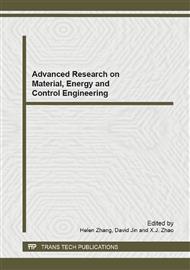p.218
p.223
p.227
p.232
p.237
p.241
p.247
p.251
p.255
Comparison between Numerical Simulation and Analytical Calculation of Heat Loss and Temperature Profile of Buried Pipes
Abstract:
The fictitious thermal source (FTS) method has always been the popular analytical way to solve heat transfer of buried pipes. Aiming at complicated conditions, simplified model and procedure based on the FTS method often casts doubts upon the results. Therefore, a numerical simulation method with circle boundary condition is validated comparing to the accurate temperature profile of buried steel pipe without insulation calculated by the FTS method. Then, the simulation method is used to verify calculation error when solving insulated pipes by the FTS method. The comparison shows that it is difficult to obtain accurate temperature profile for buried insulated pipe by the FTS method. However, the average temperature and heat loss are more precise and can be used to solve complicated problems by the analytical method.
Info:
Periodical:
Pages:
237-240
Citation:
Online since:
January 2013
Authors:
Price:
Сopyright:
© 2013 Trans Tech Publications Ltd. All Rights Reserved
Share:
Citation:


